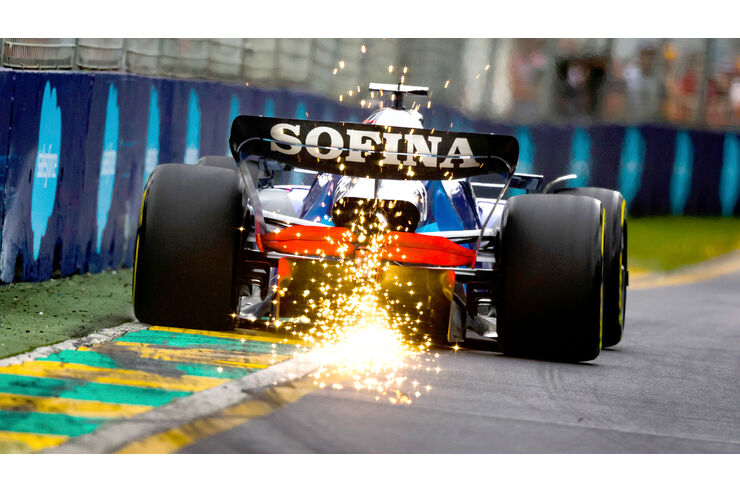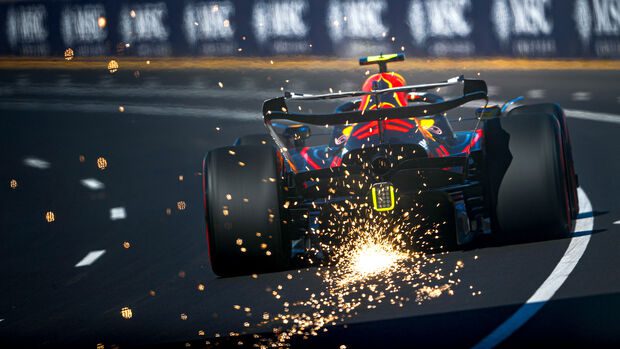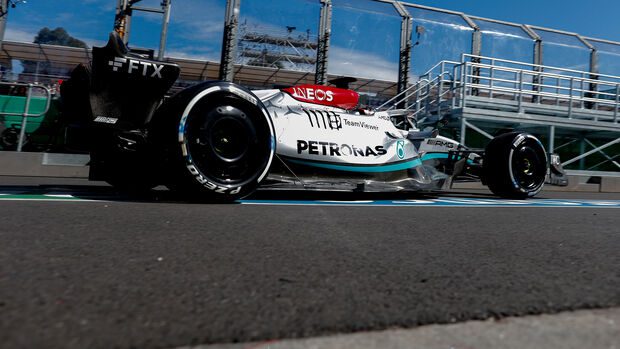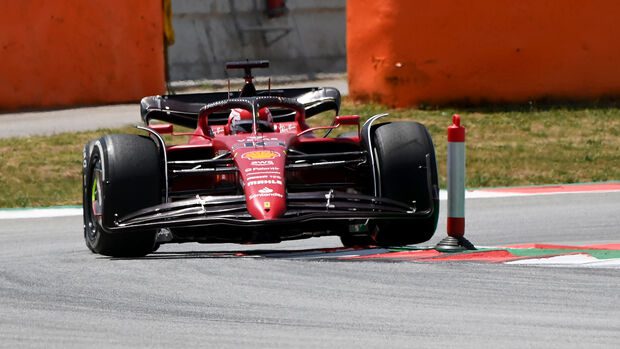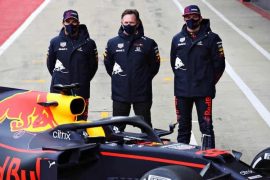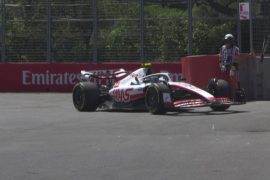The FIA has never reacted so quickly. In Baku, many drivers complained that their cars were toppled too high and above a certain speed, drifting so violently that they developed back problems and headaches that could lead to a loss of concentration. Already in Montreal, teams that drive their cars very low and thus create aerodynamically and mechanically generated bouncing must work together.
The world union wants to investigate vertical oscillations and forces on drivers in all cars with immediate effect. To this end, not only is the wear and tear of the plank under the car more strictly controlled, but the measured values of the two acceleration sensors near the vehicle’s center of gravity are used to determine the rated data. up and down movements.
If a certain threshold is exceeded, the team will have to adjust the setup and possibly change the vehicle height or spring rate. The teams will be informed about the limit before the third practice session. Cars that do not meet this value will be considered unsafe and will be disqualified.
motorsport images
Lewis Hamilton complained of extreme back pain, especially in Baku.
Classification as “Dangerous Construction”
The FIA states in its Technical Directive TD039 that the phenomenon of vertical oscillation, commonly referred to as “bouncing” or “porpoising”, is a property that has been observed with increasing concern since this year.
With low ground clearance, low adjustment and minimal suspension travel, he has seen many drivers complain about too much grounding on the track. It can also lead to health problems or accidents.
“In a sport in which participants regularly reach speeds in excess of 300 km/h, the driver must remain fully focused at all times,” the association said in a statement. “Fatigue and pain can have a significant effect if it disrupts concentration. The FIA is also concerned about the medium-term physical impact on the health of drivers, many of whom complained of back pain after a recent race Is.”
The world federation now robs the driver of full control of the cars as a “dangerous construction”. Therefore, under Article 1.3 of the Technical Regulations, any car classified as dangerous can be disqualified. Therefore measures were introduced with immediate effect to reduce the rocking of the cars to tolerable levels. They apply ahead of the Canadian GP.
Wilhelm
There are border values to be set in Canada that should not be exceeded.
Threshold for the third training session
In the first stage, wear and tear on the floor panel under the car is studied more closely. For this purpose, a metric value is defined as a criterion for the range of oscillations. The analysis of how this parameter is determined is ongoing and will continue in two training sessions on Friday.
The so-called “Az signal” for vertical acceleration during up and down movements is transmitted directly to the FIA control unit. In such a situation, the scrutinizers can ever see how hard the car hits the road at high speed.
It is still being discussed how the AZ signal should be evaluated, whether peak values or average forces are taken into account. Teams measuring these values are invited to share their methodology with the FIA for their own setup analysis.
Teams still do not know what the rule holders consider an acceptable value. They should be known before the third training session. Teams are then required to determine the oscillations on three consecutive laps with the DRS disabled at race pace. If it is suspected that the driver is deliberately driving slowly, the attempt is considered unsuccessful. The same applies when you close the gap for another car.
Wilhelm
Anyone who does not comply with the bouncing limit will have to increase the ground clearance.
Up to ten millimeters for violations
Once the FIA has determined a “safe set-up” for each individual vehicle, the ride height, spring rate and damper settings, and aerodynamic configuration can no longer be changed. Exceptions are:
- The car can be set even higher
- seasonal change
- Adjustment for cooling requirements
- tire pressure
- front wing adjustment
If a competitor wishes to revert to a previously used setup, they must first demonstrate to the FIA that these adjustments meet safety criteria. All parameters such as vehicle height, suspension travel and aerodynamic configuration must be submitted to the FIA in a ballot sheet after the third practice session along with the respective oscillation values.
If a competitor is not able to reach the limit required by the FIA and therefore has a safe setup, it should use the setup that is closest to the limit and then increase the rear ground clearance by another ten millimeters without changing the suspension . travel or aerodynamic configuration.
Due to the short-lived announcement, teams for the Canadian GP are considering allowing a second support cable for the floor, as Haas did in Barcelona, for example.
For 2023, bouncing events must be ruled out from the start. Thus, the sides of the sub-floors can be raised, the floor area can be reduced and the restriction of the wings on the edge of the floor can be considered. The teams are therefore asked to report to the FIA on the results of the development of the 2023 cars.
motorsport images
Will the new directive change the balance of power? The question is who is the least victim.
Bad for Mercedes, good for Red Bull
The FIA campaign could turn the world championship upside down. Teams are particularly affected whose cars have previously been exposed to strong bouncing movements on the straights and which were difficult to land on bumpy track surfaces. These include notably Mercedes and Ferrari. But McLaren and Alpha Tauri drivers also complained of excessive shaking after the Azerbaijan GP.
Mercedes drivers’ lawsuits could have the opposite effect. If cars have to lift as a result, they will slow down. It hits the Mercedes W13, which only works in a small window, particularly hard. Ferrari has more leeway in terms of vehicle height. Red Bull will be happy with the new technical directive. The championship leader’s cars were never affected by bouncing.
Some teams in the midfield can also benefit. Teams like Aston Martin, Alfa Romeo or Alpine. Aston Martin with its B variant has made the car more resilient to changes in ride height and can now go higher without losing much speed. Right from the start, Alpine and Alfa Romeo let themselves down when it came to ground clearance and hence never complained about bouncing problems.
Particularly in these circles, people are satisfied with the way the FIA has responded to criticism from drivers. Tenor: “It would be bad if the rules were changed now because some teams can’t deal with this problem. Kind of minimum weight. And like you try with inflation surcharge. The solution to this problem is as simple as it is now FIA If you hit the road hard enough, you just have to keep your car high.”

Web guru. Amateur thinker. Unapologetic problem solver. Zombie expert. Hipster-friendly travel geek. Social mediaholic.

